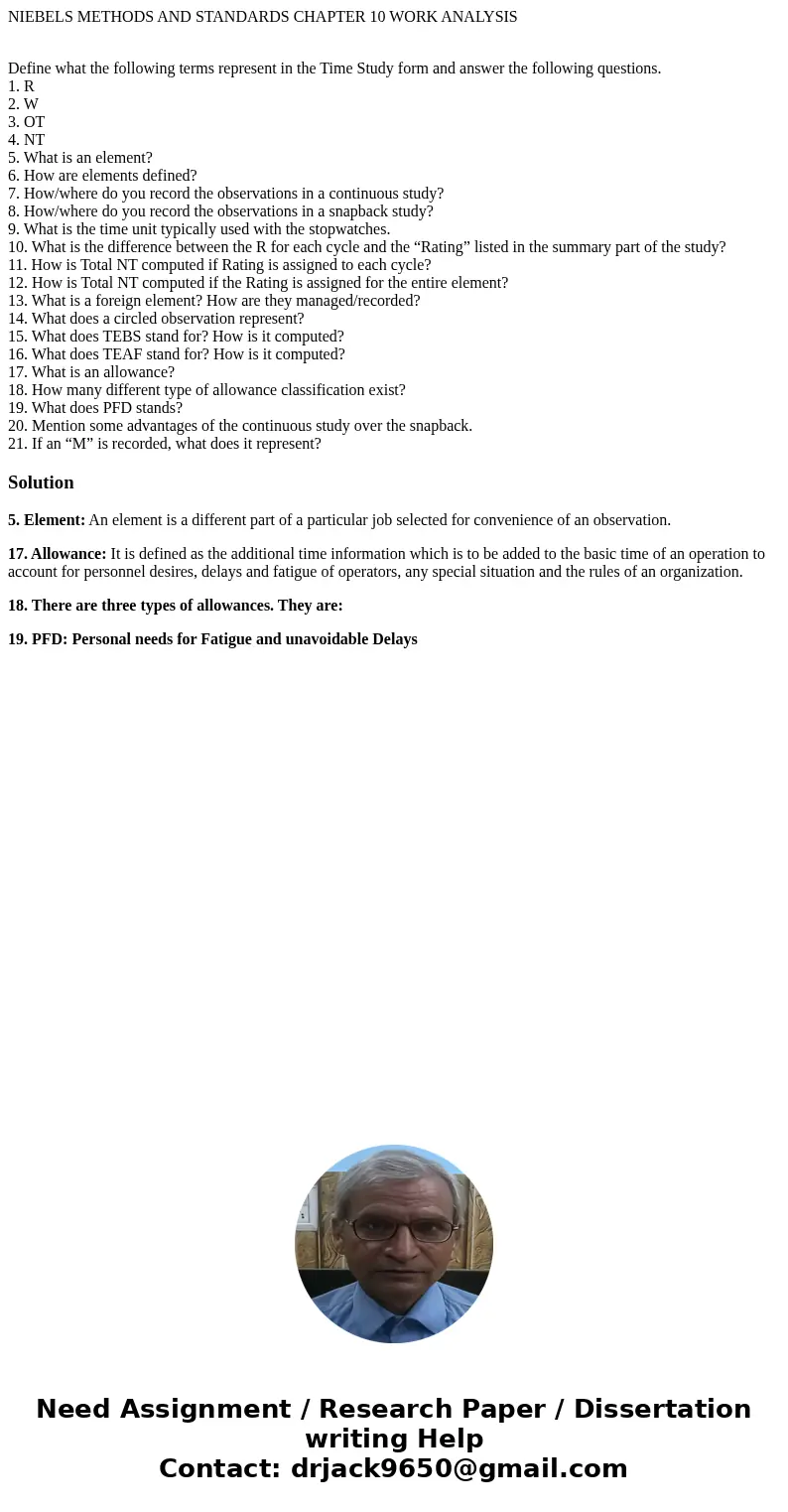NIEBELS METHODS AND STANDARDS CHAPTER 10 WORK ANALYSIS Defin
NIEBELS METHODS AND STANDARDS CHAPTER 10 WORK ANALYSIS
Define what the following terms represent in the Time Study form and answer the following questions.
1. R
2. W
3. OT
4. NT
5. What is an element?
6. How are elements defined?
7. How/where do you record the observations in a continuous study?
8. How/where do you record the observations in a snapback study?
9. What is the time unit typically used with the stopwatches.
10. What is the difference between the R for each cycle and the “Rating” listed in the summary part of the study?
11. How is Total NT computed if Rating is assigned to each cycle?
12. How is Total NT computed if the Rating is assigned for the entire element?
13. What is a foreign element? How are they managed/recorded?
14. What does a circled observation represent?
15. What does TEBS stand for? How is it computed?
16. What does TEAF stand for? How is it computed?
17. What is an allowance?
18. How many different type of allowance classification exist?
19. What does PFD stands?
20. Mention some advantages of the continuous study over the snapback.
21. If an “M” is recorded, what does it represent?
Solution
5. Element: An element is a different part of a particular job selected for convenience of an observation.
17. Allowance: It is defined as the additional time information which is to be added to the basic time of an operation to account for personnel desires, delays and fatigue of operators, any special situation and the rules of an organization.
18. There are three types of allowances. They are:
19. PFD: Personal needs for Fatigue and unavoidable Delays

 Homework Sourse
Homework Sourse